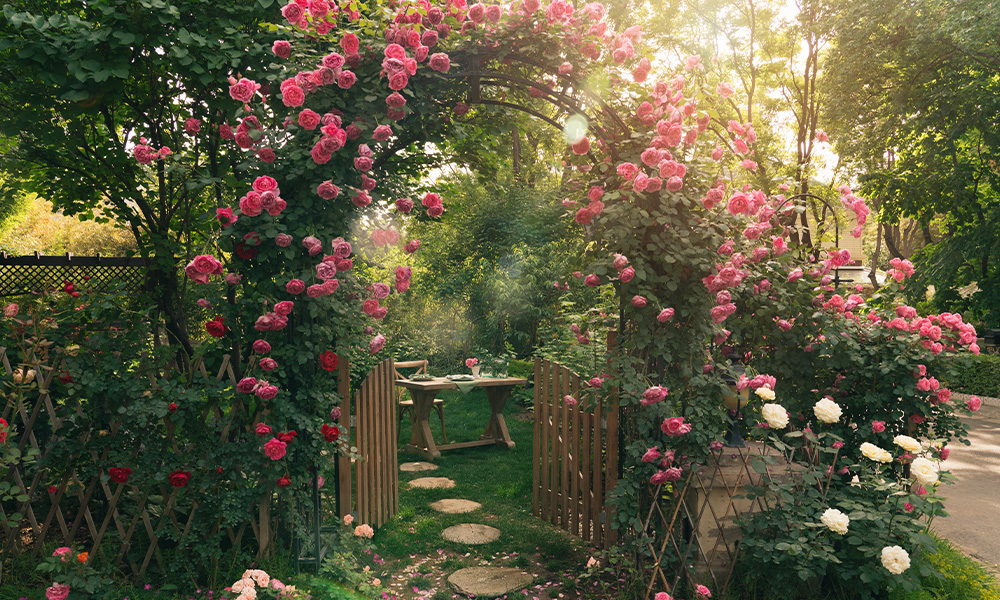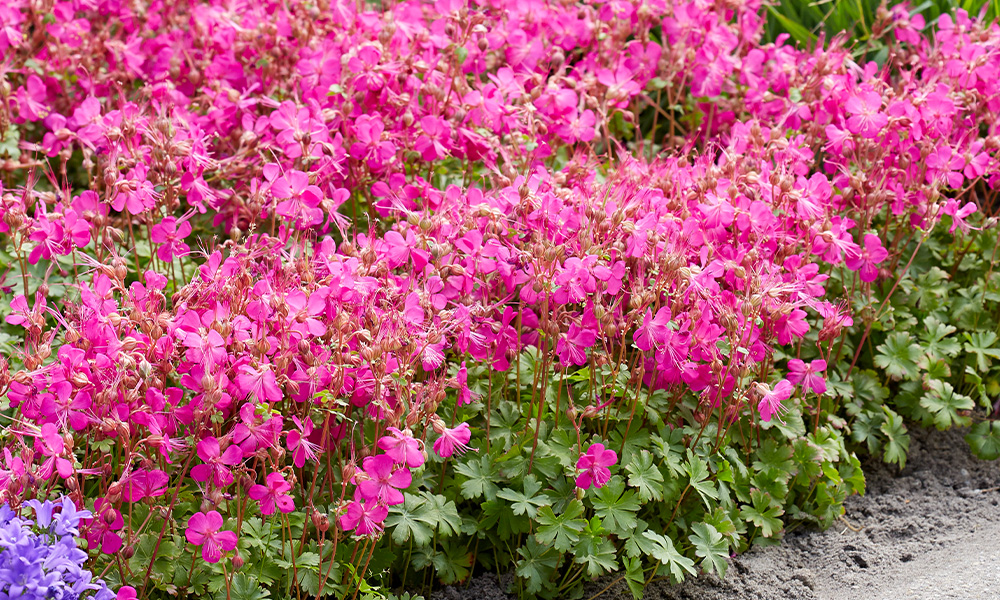top 10 sustainable gardening tips
top 10 sustainable gardening tips
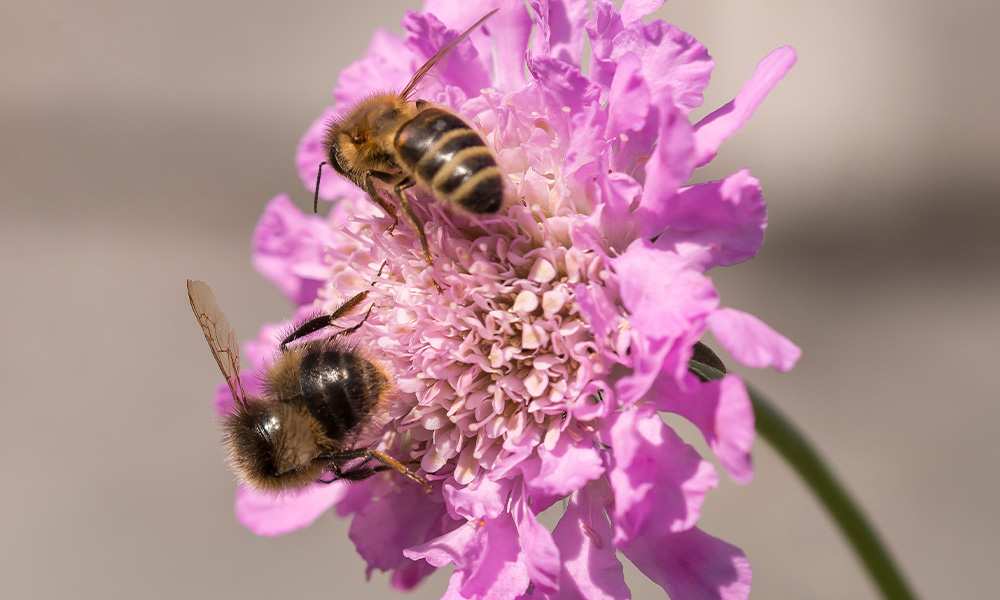
We all value our gardens greatly and invest a lot of time and effort into making them look the best we can here are our top 10 sustainable gardening tips you can introduce. From a wider perspective, we should (and no doubt do) value the environment beyond our own fences and hedges - not only places local to us but the country as a whole and, indeed, the planet. With this comes a sense of responsibility to care for and nurture the valuable resources it provides us with. Knowing what to do, when to do it and how you can make a difference is complex so we thought it might be helpful to share some of our tips with you. We hope that you learn something new to help you do a little bit more regarding sustainability. Discover our top 10 sustainable gardening tips.
Boundaries
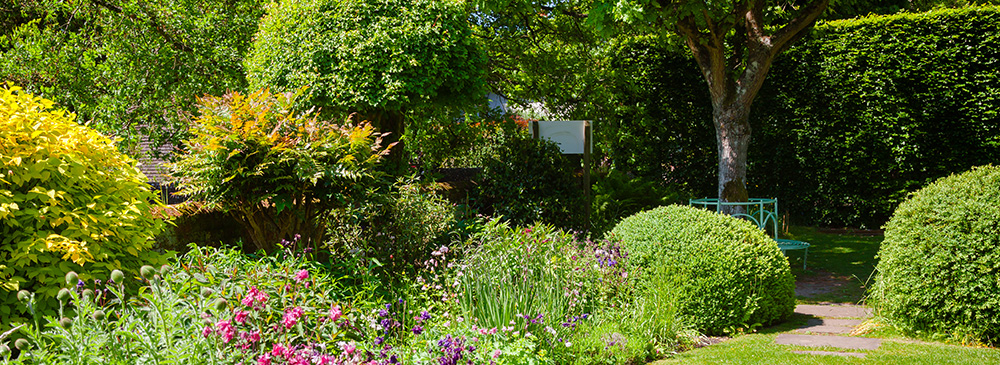
In the UK it is traditional to have some form of demarcation around your garden’s boundary. Very often this is a solid garden wall or a wooden fence, supported by concrete gravel boards and posts. Whilst these are great from a practical perspective – hedges are far better as they offer habitats for wildlife and counteract air pollution. It is not always possible (or desirable) to replace existing boundaries with a hedge to the rear and sides of your property, but you do have more autonomy over the front of your house so consider restoring a hedge if you can. There are so many hedging plants to choose from and not all of them form a thick, impenetrable barrier – the majority can be trimmed to control their height, some are smaller in stature, and you can even plant (or train) stepover fruit trees for fruit bowl and a hedge in one!
Pollinator Paths

When looking at internal boundaries – for instance to create a ‘rooms’ within your garden - hedges come into their own and can comprise of any shrubs or plants you like. Lavender is popular to line pathways and is great for bees, roses are also beneficial and smell as lovely as lavender. You can also use recycled materials to make boundaries – we love the idea of using fallen tree branches, intertwined to create a sculptural effect or weaving willow to create a growing willow fence. The possibilities are endless within your own space and almost any material can be recycled from a sustainability perspective.
Wildlife
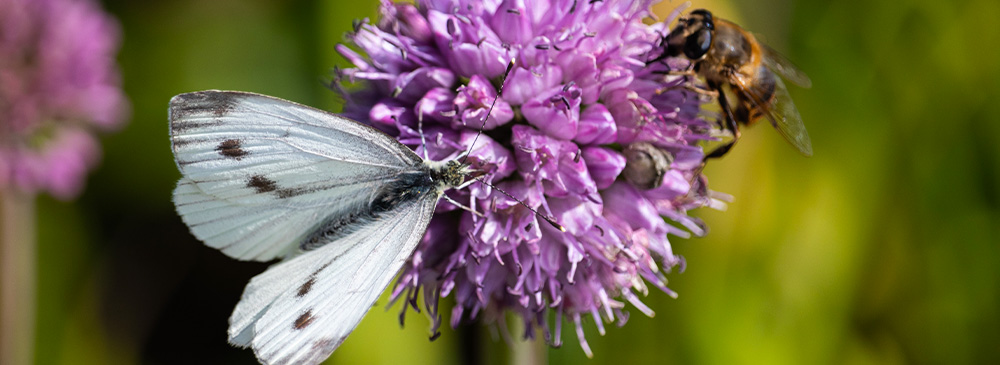
Which moves nicely on to pollinators and wildlife specifically. If you want to attract more bees and other insects to your garden look for the RHS Plants for Pollinators symbol – this is the generally recognised indicator that a plant is beneficial for them. Not only are bees in a state of crisis globally but garden moths (our precious nocturnal pollinators) are also in decline at least in part due to the loss of fields, hedgerows and other plants vital to their survival.
With this in mind planting at least some pollinator friendly flowers in your garden will make a real difference. The plants do not necessarily have to be wildflowers – simple, single flower forms are best (with open, readily accessible flowers). Even better if you can aim to have some of these type in your garden for the majority of the year. Spring flowers are really important for waking bees who will be, literally, starving. Also, bear in mind that the flowers produced by herbs are great for pollinators too so include them where possible. Nest boxes and bird tables will be beneficial for you as well as the birds who will munch on caterpillars, slugs and snails as well as berries from plants. Bug hotels are hugely beneficial to solitary bees and other insects looking for somewhere to lay eggs or to overwinter and a pond will encourage other visitors not only to drink from it but also to breed – frogs and toads in particular. If you are lucky enough to attract a toad or two to your garden they will also happily feast on the slugs and snails that live there. Did you know, a single toad can eat up to 10,000 in a single summer – a really sustainable way to protect your plants.
Native plants
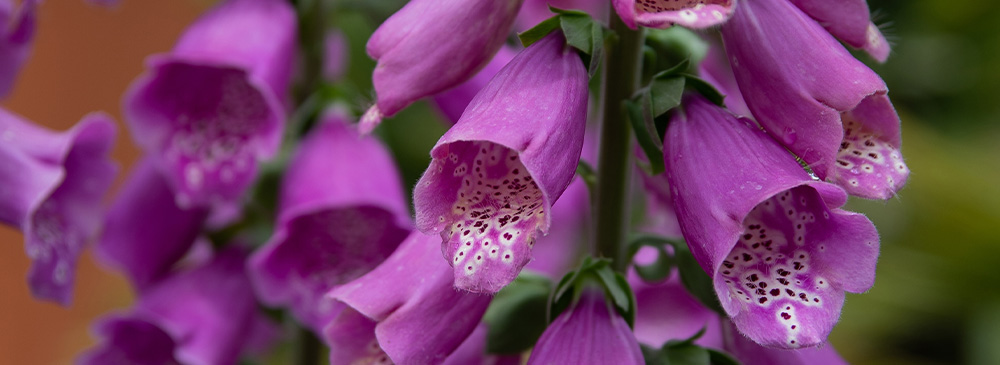
If you are able to, then set aside parts or your garden for native plants, or intersperse them with others, as they generally tough and easy to grow – often providing food and valuable habitats for wildlife. Plants like teasels and thistle also give structural interest later in the growing year and will self-seed readily. A little corner which is left untidy can also provide nesting material or a home for insects and foraging birds as well as, if you are lucky, a hedgehog or two.
Plant Tags
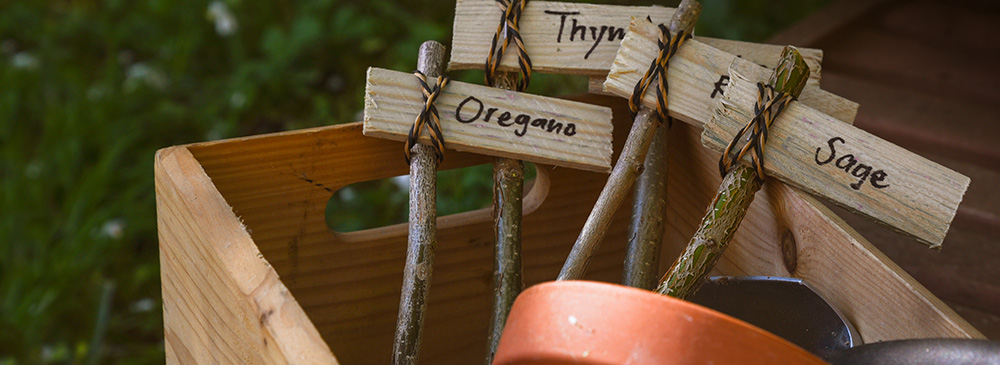
Plant tags and supports have very often been made of plastic and, as with pots, do re-use them until they are no longer fit for purpose. When replacing these items, you could keep things like ice-lolly sticks to recycle or an ingenious, fun solution is to shave a section of twig and use the flat surface to write on as per the diagram below.
Plant Supports

When plants need staking try to use organic materials such as birch twigs – they are also useful poked into the ground to protect seedlings from hungry pigeons instead of using plastic netting. Use wool or jute twine instead of plastic-coated ties – not only are they kinder to plants but also better for the environment. Where something stronger is required, we would recommend steel hoops for plants like peonies which can be inclined to flop over. Whilst they are not a cheap alternative, they will last a lifetime (and beyond) when properly looked after and can be pressed into action as soon as needed.
Companion Planting

Companion planting offers another natural solution which can repel unwanted insects without eradicating the welcome ones. For example, marigolds emit a strong odour which is unpleasant to greenfly and blackfly, so it makes an excellent companion plant to tomatoes, beans and sweetcorn. Leeks and carrots do well next to one another as leeks repel the carrot fly and carrots repel the leek moth. Horseradish plants grown near to potatoes will increase their disease resistance and plants from the pea family (lupins, peas and beans) take nitrogen from the air and store in their roots so should be snipped off rather than dug up when spent as the roots will then decompose and release the stored nitrogen into the soil. Our favourite is that Basil grows well with tomatoes, and they are perfect companions on a plate too (perhaps with a little mozzarella) …
Pest Control
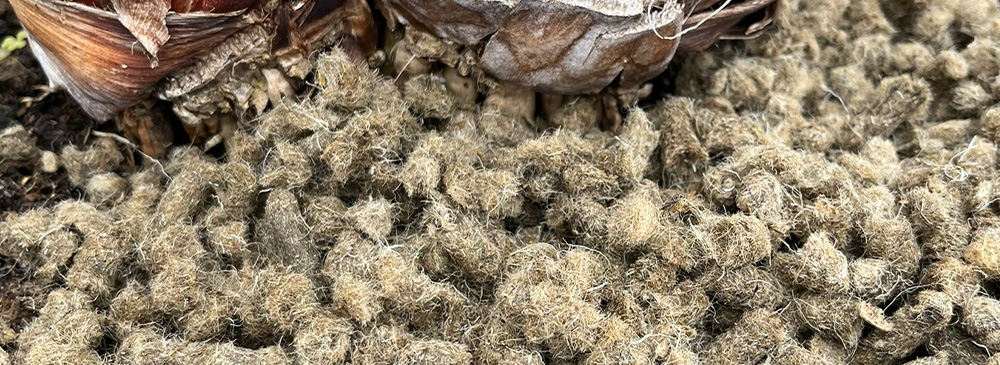
The key here is to use environmentally friendly pest controls whenever and wherever possible. A vigilant daily patrol of your garden (remembering to check the underside of leaves and underneath pots too) accompanied by a deft, ‘squishing’ action is the best way to deal with many pests such as lily beetle, viburnum beetle and cabbage white butterfly eggs. For the squeamish - myself included - a pair of rubber gloves will help. There are a number of ways to help keep far too familar slugs away including but not limited to: beer traps, wool pellets, crushed shells, sawdust, copper tape. Equally, it's important to pick the right plants for the garden, slugs and snails tend to avoid really fuzzy leafed foliage, keep an eye out next time you're browsing online, and we'll tell you in the description if it's going to survive against our slimy garden neighbours!
When it comes to spraying pests – organic is best. If you have to buy one then check the bottle but, before you head off shopping, do a bit of research first. A quick internet search and we found several recipes for home-made sprays that include garlic, elder, mint and even rhubarb leaf and will certainly be trying one or two before buying a proprietary spray again. Copper tape or bands will ward off slugs and snails, as will horticultural grit or crushed shells around the base of your pots and plants. There are many different, sustainable products to choose from and we all need to develop an inquisitive attitude towards them in order to find a way forward. The more we can move towards a natural, environmentally friendly approach the better we will appreciate what valuable jobs some of the wildlife that visits our gardens do. This will encourage us to establish an ecological balance tin our gardens and reduce the need for chemicals.
So, jet wash the greenfly off, leave a messy corner for the slug-eating hedgehogs and slow-worms to hide away and put up some nest boxes to encourage the birds who are always willing to help with caterpillar patrol.
Compost & Mulch
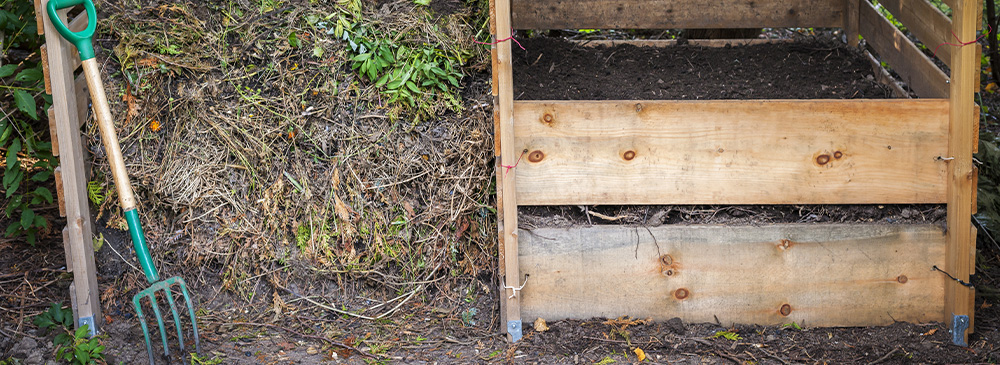
If space allows, making your own compost is hugely beneficial. Not only does it minimise your trips to the tip disposing of garden waste but also creates a positive perpetual cycle in your garden by restoring nutrients to the soil. Even if you cannot make enough compost for your requirements, it is still a commendable sustainable activity to undertake. Where space is at a premium then many local councils offer a brown bin collection service (for a small annual fee) whereby they take your garden waste away, compost it and sell it on as soil conditioner so there is less rubbish going into landfill.
The traditional way of composting involves putting aside some space for a compost bin or bays. Ideally a 3-bay set up so that bay 1 stores the waste ready for shredding, bay 2 is the early composting stage (where you put your shredded waste) and then you turn your compost from bay 2 into bay 3 ready for the final part of the process. A single composting bin will do the job too – find one with a trap door in the bottom so that you can remove the composted waste from the lowest layer without having to remove the top layer first.
You will notice that we continue to offer compost which incorporates peat, but we have carefully sourced peat free varieties which we would prefer you to buy from us instead. Peat-free versions were heavily criticised when first introduced in the 1990s, but they have greatly improved since then and, if you have very hungry plants, you can always top up with fertiliser or commence supplementary feeding sooner than you would have done previously. We need to care for these precious bog habitats and the practice of extracting from them is causing irreparable damage as they form very slowly (over centuries) and offer a rare natural habitat for certain plants and wildlife species.
Save Your Water

When we can, at times, have a surfeit of water in the UK it is easy to forget about saving water as the rainfall can seem never ending. It is fair to say, for whatever reason, the climate is changing, and we can sometimes be short of water too. So, save it when it is in plentiful supply. Install the largest water butts you can and remember to put them on sheds and greenhouses too – you would be amazed how quickly a water butt can fill from a little roof. Sadly, they empty quickly when you have lots of plants to water, but it goes a little way to help. Think, if you multiply your efforts by all the other people in your road, town or county – that equates to considerable effort.
Contentiously we would advise you not to water your lawn - in times of water shortage there really is no need. Save yourself the job of mowing and let it go brown – grass is resilient stuff, and it will very quickly recover after the rain returns. The only exception is a newly seeded or turfed area, although jobs like these are best saved for Spring or Autumn when regular rain is more likely. From a gardening perspective you only really need to water annuals, vegetables, plants in pots and newly planted shrubs and perennials - particularly when water is in short supply.
Another canny trick to minimise water usage is to use biodegradable mulch such as compost, wood chippings or seaweed around plants and on borders to suppress weeds and retain moisture in the soil. Over time, this will also break down and improve the quality of the soil. At one time you could get hold of chippings from local tree surgeons but nowadays it seems that they are snapped up for bio-mass boilers so, if you need to have work carried out on any of your trees ask to keep the chippings! They are best applied during mid-late spring and autumn, when the soil is moist and warm for optimum benefit.






